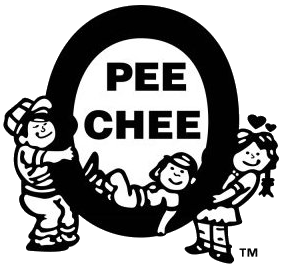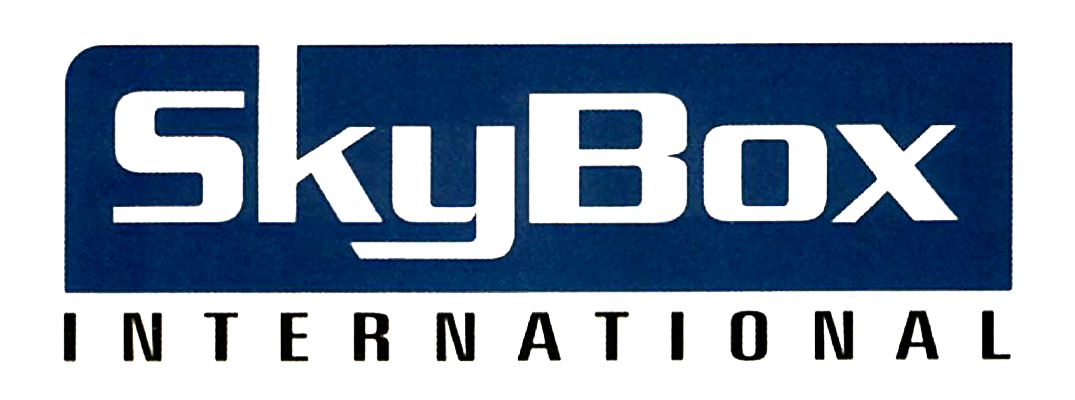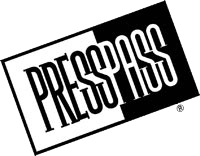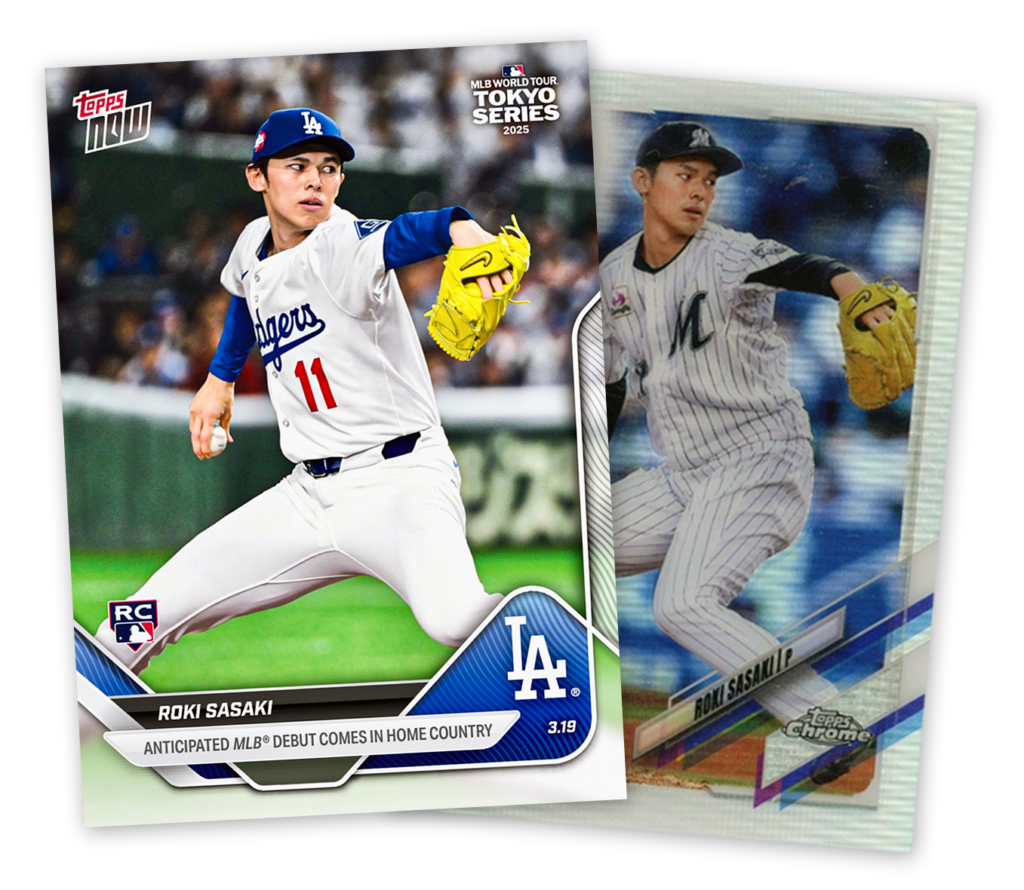In the previous chapter, we explored the roles of licensors, such as leagues and players associations, and licensees, including card companies and manufacturers. In this chapter, we will delve into the brands and products developed by these manufacturers.
By the end of this chapter, you should be able to differentiate between a brand and a manufacturer, gaining a clear understanding of their distinct roles. You will also be able to list examples of brands associated with specific manufacturers and identify popular brands from the past. Additionally, you will develop an understanding of brand equity in grading and how it influences consumer perception. Lastly, you will be equipped to discuss the major channels through which brands are distributed, providing a comprehensive view of brand dynamics in the marketplace.
What is a Manufacturer?
A manufacturer refers to a card company (and licensee) with the rights to design and produce trading card products. However, it’s important to note that a ‘manufacturer’ is often not directly involved in the physical production, such as printing and packaging. These steps are typically outsourced to third-party providers.
The current sports trading card manufacturers hold the following licenses:
- Topps: MLB/MLBPA, NBPA, NFLPA, College/NIL, Disney
- Panini America: NFL/NFLPA, NBA/NBPA, MLBPA, WNBA, College/NIL, LIV Golf
- Upper Deck: NHL/NHLPA, CHL, Hockey Canada, AEW, DC, Looney Tunes, College/NIL, Call of Duty League
- Leaf: NIL
What is a Brand?
A brand encompasses the trade name, design, and attributes of the products developed by a manufacturer. A manufacturer will often develop several different brands, each desired to appeal to a different collecting demographic. Most often, these brands are differentiated by product theme and price point.
In the sports trading card world, brands sometimes outlast manufacturers, and vice versa.
Example: Upper Deck is the manufacturer of many brands, including the following NHL hockey brands: Artifacts, Black Diamond, MVP, O-Pee-Chee, Overtime, Parkhurst, SP Authentic, SP Game Used, SPx, Synergy, Trilogy, The Cup, and Upper Deck (Series 1 & 2).
It is also important to note that often a manufacturer’s flagship brands have the same name as the manufacturer. Like Upper Deck Series 1 & 2.
Brands of the Present and Past
Over the years, some of the industry’s most legendary brands have undergone numerous transformations, changing ownership and evolving along the way. Below are some of the most prominent examples:

Topps
Topps, established in 1938 by the Shorin brothers in Brooklyn, NY, initially specialized in producing chewing gum. To stand out in a competitive market, the company began including trading cards with gum in the early 1950s. Their iconic breakthrough came with the 1952 baseball card set, designed by Sy Berger, which revolutionized sports card collectibles and featured the legendary ’52 Topps Mickey Mantle card.
Over the years, Topps expanded its offerings beyond baseball, introducing cards for all major sports, television shows, movies, and cultural phenomena such as Star Wars and Pokémon.
In 2022, Topps was acquired by Fanatics, securing the future of its legacy and influence within the evolving collectibles industry.

Panini
Panini was established in 1961 by brothers Giuseppe and Benito Panini in Modena, Italy, beginning as a newspaper distribution business. The duo discovered unsold stickers and decided to package and sell them, which became an immediate success. That same year, Panini transformed the collectibles industry with the release of “Calciatori,” the first officially licensed soccer sticker collection with an album, which gained widespread popularity across Europe.
The company soon expanded further, creating sticker albums for major global events, including the FIFA World Cup, starting with the Mexico 1970 edition. By the 1980s, Panini had become a global sensation, enchanting collectors with its stickers and albums.
In 2009, Panini made its entry into the US market by acquiring the Donruss/Playoff Corporation, strengthening its foothold in sports trading cards.
Today, Panini remains at the forefront of the collectibles market, producing stickers and trading cards for soccer, basketball, football and various other sports, along with entertainment franchises.

Upper Deck
Upper Deck, founded in 1988 in Yorba Linda, CA, set out to create premium trading cards that stood apart in quality and design. Their groundbreaking 1989 baseball card set revolutionized the industry with features like glossy finishes, durable cardboard, and counterfeit-proof holograms. In later years, the company introduced the first randomly inserted autographed cards, establishing a new benchmark for collectibles. Upper Deck quickly expanded its reach to other sports, including hockey, basketball, and football.
The company also delved into entertainment cards, showcasing popular franchises such as Looney Tunes, and more recently Marvel DC Comics, Halo, and World of Warcraft. Exclusive agreements with sports legends like Michael Jordan, Wayne Gretzky and later Tiger Woods further solidified Upper Deck’s reputation as a leader in sports memorabilia.
Today, Upper Deck remains one of the premier card manufacturers, continuing to innovate and produce high-quality collectibles that honor its enduring legacy.

Leaf
The Leaf brand originated with the Leaf Gum Company, established in Chicago during the 1940s. It gained significant recognition in 1948 with the release of the Leaf Baseball set, one of the first full-color trading card series after World War II. This set remains highly regarded by collectors, particularly for featuring the first mainstream card of Jackie Robinson.
During the 1980s, Leaf became known as the Canadian counterpart to Donruss, producing bilingual baseball cards that prominently displayed the Leaf logo. In the early 1990s, Leaf transitioned into the premium baseball card market with the introduction of its own high-quality set Leaf Baseball. In 1994, the brand was acquired by Donruss, marking another chapter in its evolution.
In 2010, the brand experienced a rebirth with the establishment of the modern Leaf Trading Cards company. Today, Leaf produces an extensive array of trading cards spanning several sports and non-sports categories. Despite lacking licenses from major sports leagues, Leaf has carved out a niche with its innovative designs and creative offerings.

Rittenhouse Archives
Rittenhouse Archives Ltd., established by Steven M. Charendoff in January 1999, is a U.S.-based company specializing in non-sports trading cards and collectibles.
Headquartered in Jenkintown, PA, the company produces licensed trading cards focused on science fiction, fantasy, and comic book franchises such as Star Trek, James Bond, Marvel Comics, and Game of Thrones.
Charendoff brings extensive expertise to the business, having previously worked with Fleer/SkyBox and the National Hockey League.
Over time, Rittenhouse Archives has become a leading name in the non-sports trading card industry, renowned for its high-quality products and creative designs. The company continues to expand its offerings, providing collectors with an impressive range of unique and sought-after items.

Bowman
The Bowman brand of was established by the Bowman Gum Company, founded by Jacob Warren Bowman in 1927 in Philadelphia, PA. While initially focused on gum production, the company gained prominence in the card market with its 1948 Bowman Baseball set, featuring vibrant designs and a checklist of legendary players.
Throughout the early 1950s, Bowman became a significant competitor to the market leader Topps, but in 1956, it was acquired by Topps, ending its independent operations.
After decades of dormancy, Topps revived the Bowman brand in 1989, and within a few years, the brand was firmly positioned as the go-to product for rookie and prospect cards.

Donruss
Founded in 1954 by brothers Donald and Russell Wiener in Memphis, TN, Donruss initially focused on confectionery before transitioning to trading cards in the 1960s and 1970s. During this time, the company produced popular sets based on Marvel Super Heroes and well-loved TV shows.
Donruss entered the sports card market in 1965 with a series of racing cards and became a major producer of baseball cards by 1981, joining competitors Fleer and Topps. Throughout the 1980s and 1990s, the company expanded its offerings to include football, basketball, and hockey cards.
In 1996, Donruss was acquired by Pinnacle Brands, but financial struggles led to Pinnacle’s bankruptcy in 1998, halting Donruss card production. The brand was revived in 2001 by Playoff Corporation and later acquired by Panini Group in 2009, where it continues to thrive as a cornerstone of Panini’s portfolio.

Fleer
Fleer, established by Frank H. Fleer in 1885, initially gained recognition in the candy industry with its invention of bubble gum, most notably the iconic Dubble Bubble. The company ventured into the trading card market in 1923, debuting with a series of baseball cards.
Throughout the years, Fleer expanded its portfolio by introducing football cards in 1960 and basketball cards in 1961. Its most significant breakthrough came in 1981 when it re-entered the baseball card market, where it remained a dominant player for the next two decades.
In 1995, Fleer merged with SkyBox International, further strengthening its position in the industry. However, by 2005, financial difficulties led to the acquisition of Fleer/SkyBox by Upper Deck, marking the end of its independent operations but preserving its legacy.

O-Pee-Chee
The O-Pee-Chee brand was established in 1911 by brothers J.K. and D.H. McDermid in London, ON, as a Canadian gum and candy company. Initially dedicated to confectionery, it expanded into the trading card market during the 1930s by including hockey cards with their gum to drive sales during the Great Depression. In 1958, O-Pee-Chee formed a partnership with Topps to produce trading cards for baseball, hockey, and other sports, becoming a key player in the Canadian market with bilingual offerings.
Though the company ceased operations in 1996, its name was later licensed by Topps and eventually by Upper Deck, both of which kept the brand alive by continuing to release hockey cards under the O-Pee-Chee label. Today, O-Pee-Chee remains a cherished part of the trading card industry with Upper Deck, known for its enduring legacy and deep ties to Canadian sports culture.

Parkhurst
Established in Toronto, ON in 1948 by George Kennedy, Parkhurst Products became a beloved name in the trading card world, renowned for its legendary “Parkies” hockey card series launched in 1951.
Over its 16-year history, the company created 41 card sets, in hockey, baseball, football, wrestling, and other sports.
Despite its popularity, growing competition from rivals like O-Pee-Chee and Topps led to Parkhurst’s closure in 1964.
The brand saw revivals in 1991 under Pro Set, in 1994 by Upper Deck, then in 2000 under In The Game, Inc. In 2005, the brand was acquired again by Upper Deck, which continues to release Parkhurst hockey cards today.

Allen & Ginter
Allen & Ginter, a tobacco company founded in the 1860s by John Allen and Lewis Ginter in Richmond, VA, is recognized as a pioneer of trading cards in the United States. In the late 1880s, the company introduced chromolithographed cards in its cigarette packs, showcasing a variety of themes, including baseball players, Native American chiefs, and wildlife. Among these, the 1887 set featuring early baseball stars is celebrated as the first nationally distributed baseball card series.
After merging with the American Tobacco Company in 1890, the Allen & Ginter brand faded into history. However, it was revived by Topps in 2006 and continues its legacy through modern trading cards that artfully combine sports, history, and unique inserts with autographs and memorabilia. These cards have become an annual favorite among collectors, celebrating the brand’s rich heritage and innovative spirit.

Pinnacle / Score
The Score brand of trading cards was launched in 1988 by Pinnacle Brands, a company previously known as Optigraphics, which specialized in lenticular printing. Founded in 1986, Optigraphics gained early recognition for its Sportflics brand, which introduced innovative lenticular motion cards.
Building on this success, the company ventured further into the trading card market with the creation of Score, which quickly gained popularity for its bright designs, full-color backs, and detailed player biographies. Score expanded its offerings across various sports, including baseball, football, basketball, and hockey.
Pinnacle Brands continued to lead in trading card innovation, launching premium card lines under the Pinnacle name while maintaining Score as its cornerstone brand. The company acquired Donruss in 1996, further strengthening its position in the market. However, financial struggles in the late 1990s, driven by overproduction and market saturation, impacted Pinnacle and the broader trading card industry.
Today, under the Panini America umbrella, Score remains a beloved brand, celebrated for its creativity and affordability.

Playoff
The Playoff brand of trading cards was introduced in the early 1990s by Playoff Corporation, a company based in Arlington, TX. Initially focused on football cards, Playoff gained recognition for its premium designs and innovative features, such as foil stamping and high-quality photography. The brand expanded its offerings to include other sports and became known for its memorabilia cards, which included game-used materials like jerseys and footballs.
In 1999, Playoff acquired the rights to Donruss and Score, merging these iconic brands under its umbrella. Eventually, Playoff was acquired by Panini Group in 2009, where it continues to thrive as part of Panini’s extensive trading card portfolio.

Philadelphia Gum
The Philadelphia Chewing Gum Corporation (PCGC), founded in 1947 by Edward P. Fenimore in Havertown, PA, initially gained fame for its bubble gum and novelty items. Over time, the company expanded into trading cards and stickers, becoming notable for its 1964–1967 NFL-licensed football cards, which competed with Topps’ AFL-focused offerings.
Philadelphia Gum also produced cards based on themes like Marvel superheroes, World War II, and Robert F. Kennedy. After decades as a family-run business, it was acquired by Concord Confections in 2003, later becoming part of Tootsie Roll Industries.
The brand was briefly revived by Pacific Trading Cards in the mid-to-late 1990s.

Pacific Trading Cards
Pacific Trading Cards, founded in 1980 by Mike Cramer in Edmonds, WA, gained prominence for its creative innovations in trading card design, such as vibrant colors, holographic elements, and die-cut formats that stood out from competitors.
Pacific later expanded its offerings to include sets for Major League Baseball, the NFL, and the NHL, further cementing its presence in the trading card industry.
However, as the industry became more competitive, Pacific faced challenges in the early 2000s, including losing key licenses, which hindered its ability to compete. By 2004, Pacific was acquired by Donruss, marking the end of its independent operations but leaving behind a legacy of innovation and creativity in the trading card world.

In The Game
In The Game (ITG) was founded in 1998 in Toronto, ON by Dr. Brian H. Price and quickly established itself as a prominent producer of hockey trading cards. The company gained recognition with its “Be A Player” series, which featured one certified autograph card per pack, and later expanded to include sets like the all-goalie Between the Pipes, Ultimate Memorabilia, Heroes & Prospects, and the re-introduction of Parkhurst.
Despite losing its NHLPA license in 2005, ITG continued to produce cards featuring retired players, prospects, and international teams under the CHL, AHL, PHPA and Hockey Canada licenses.
In 2014, the brand was acquired by Leaf Trading Cards, which continues to release hockey-themed products with several of the In The Game brands.

Impel
Impel Marketing, established in 1989 in Durham, NC, gained recognition for its focus on non-sports trading cards. In 1990, the company made a significant impact in the card market with the release of the Marvel Universe Series 1, celebrated for their in-depth character profiles and vibrant custom artwork.
By 1992, Impel had re-branded as SkyBox International, broadening its portfolio to include sports cards and various entertainment franchises. In 1995, SkyBox was acquired by Marvel Entertainment and merged with Fleer to create Fleer/SkyBox International.

SkyBox
SkyBox International, originally as Impel Marketing, became a prominent name in the industry. The company gained market acceptance for its innovative designs and high-quality cards, particularly in the sports and entertainment sectors, including NBA and NFL trading cards.
In 1992, Impel rebranded as SkyBox International and expanded its offerings to include popular non-sports franchises like Star Trek, Marvel Comics and DC Comics. SkyBox was acquired by Marvel Entertainment in 1995 and merged with Fleer to form Fleer/SkyBox International, combining their expertise.
Although the Fleer/Skybox brand ceased independent operations, its legacy and creativity endures through Upper Deck for the next generation.

Hoops
The Hoops trading card brand debuted in 1989. Developed by NBA Properties, the inaugural set became a fan favorite, largely due to the inclusion of the highly sought-after David Robinson rookie card. Known for their sleek designs, detailed player statistics, and dynamic action photography, Hoops cards appealed to both dedicated collectors and casual enthusiasts.
Over the years, the brand introduced fresh designs and creative inserts. Now owned by Panini, Hoops continues to be a cornerstone of the basketball card market, cherished for its nostalgic value and affordability.

Goudey
The Goudey Gum Company, established in 1919 by Enos Gordon Goudey in Boston, MA, was a trailblazer in the trading card industry.
In 1933, Goudey revolutionized the market by pairing baseball cards with bubble gum in its iconic “Big League Chewing Gum” set. This series featured vibrant, hand-drawn portraits of legendary players like Babe Ruth and Lou Gehrig and remains one of the most celebrated card collections in history. Goudey continued to produce baseball cards throughout the 1930s and early 1940s, but the company ceased operations in 1962.
Today, Goudey cards are highly prized by collectors for their artistic craftsmanship and historical significance, and since 2007, the brand’s legacy endures through Upper Deck.

Pro Set
Pro Set was founded in 1988 by Ludwell Denny in Dallas, TX, and quickly became a major player in the trading card industry. It was the first company to secure an official licensing agreement with the NFL allowing it to use the phrase “The Official NFL Card” and access the league’s extensive photo archives.
The brand later expanded its offerings to include trading cards for the NHL, NASCAR, and PGA Tour as well as several entertainment properties.
However, challenges such as overproduction and financial mismanagement led to its bankruptcy in 1994.
In 2021, Leaf Trading Cards acquired the Pro Set trademark, reviving the brand for a new generation.

Press Pass
Press Pass, Inc., founded in 1992 in Huntersville, NC. The company earned recognition for its groundbreaking approach, becoming the first to incorporate game-used memorabilia into trading cards, including race-used tires in NASCAR sets and game-used jerseys in basketball sets.
While heavily focused on NASCAR, Press Pass also created draft pick cards for NFL and NBA rookies and ventured into non-sports cards, producing sets for entertainers like Elvis Presley and Kiss.
Despite its innovative contributions, Press Pass ceased operations in 2015. However, its legacy of creativity in trading card design was revived by Leaf Trading Cards in 2024.

Comic Images
Comic Images, founded in 1984 in Montvale, NJ, became a prominent producer of non-sports trading cards and stickers.
The company gained recognition for its diverse range of card sets, including popular franchises like Marvel Comics, Star Wars and WWF (WWE).
Known for its high-quality artwork and creative designs, Comic Images expanded into other entertainment properties, producing cards for television shows, movies, and fantasy art.
Over the years, the brand introduced such innovative products as the first autograph cards of The Rock, collectible card games and specialty trading cards, appealing to a wide audience of collectors. Although its prominence has waned, Comic Images remains a nostalgic favorite among fans, especially of non-sports trading cards.
Brands in Grading
It is important to note that we will dedicate a full chapter to professional grading. In simple terms, professional grading involves third-party certification, authentication, and evaluation of cards, similar to appraising jewellery. The roots of professional grading go back to coin and stamp collecting. Professional card grading became imperative once sports card values began to substantially increase.
As previously mentioned, the four major brands and grading companies in this space are PSA, SGC, BGS, and CGC.
PSA was founded in 1991. SGC followed in 1998, and BGS was established in 1999. CGC Cards, founded in 2020, has a long history as the premier comic-book grader since 2000.
In today’s secondary market, PSA grades the most sports cards (roughly a 9:1 ratio compared to its top competitor SGC, who they now own), holds the strongest brand equity and, consequently, the highest resale value for graded cards.
For the same card in the same condition grade, SGC typically generates roughly 75-90% of the value of a PSA-graded card in the secondary market, while BGS and CGC cards generally sell for 70-75% of the value.
PSA and SGC cards have much more equivalent value in the vintage card market (cards produced prior to 1990).
From the early 2000s to around 2016, BGS was the top brand among collectors and investors in modern card grading. Since 2018, SGC has gained significant market share due to their unique black (“tuxedo”) holder, excellent and responsive customer service and industry-leading turnaround times. The trends in the graded card market are ever-changing and evolving.
Brands and Distribution Channels
What are the major channels of distribution? In other words, where are the cards sold?
Retail distribution refers to card products sold in big-box stores like Walmart, Target, or Toys “R” Us (in Canada).
Hobby distribution refers to products sold to independent hobby stores, online stores, and independent dealers.
Direct distribution refers to products or individual cards sold directly to the end consumer. Examples Topps Now, Panini Instant and Upper Deck e-Pack.
Both “retail” and “hobby” versions of products typically offer insert cards, parallel card, and premiums that are unique to the respective channel. The base cards in the product are the same.
Manufacturers often create products specific to a distribution channel. Some examples include:
- Upper Deck’s Parkhurst hockey product: Historically a retail-only product exclusive to Walmart, for 2024-25 the set is an e-Pack exclusive
- Panini Select basketball and football products: Historically hobby-only products until the 2020-2021 season.
- Topps Now and Panini Instant: Online, digitally-printed, made-to-order products for the end consumer, typically available for a very limited time, ranging from a few days to a week.
—
Next, Chapter 4: Types of Sports Collectors






